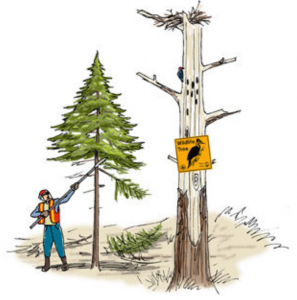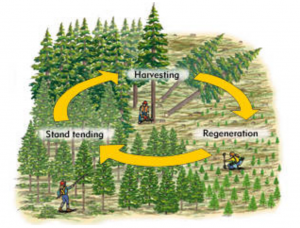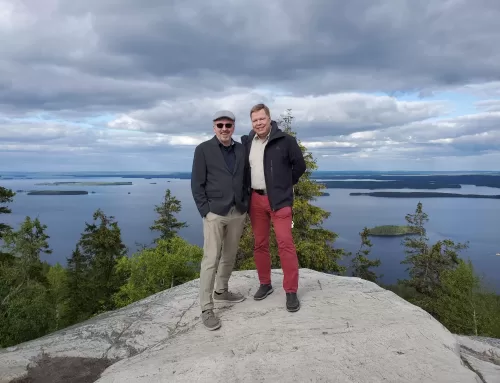 University of Vermont (UVM) forest ecologist Bill Keeton is taking a “middle-aged” approach to managing forest ecosystems by nudging them towards “old growth conditions“. His 15-year study, some of which consists of research conducted on the 500-acre University of Vermont Jericho Research Forest, involves the regeneration of recovering secondary forests (those in recovery since the 19th century) by using old growth engineering techniques for harvesting trees in a way that mimics mother nature. This includes downed, decomposing trees and girdled tree limbs to “create dead branch snags”, which provide wildlife habitat. Keeton’s work is among that of other forest management practitioners who have applied silvicultural practices in order to improve forest growth and productivity, and/or to promote increased aboveground carbon storage, while enhancing “late-successional biodiversity“.
University of Vermont (UVM) forest ecologist Bill Keeton is taking a “middle-aged” approach to managing forest ecosystems by nudging them towards “old growth conditions“. His 15-year study, some of which consists of research conducted on the 500-acre University of Vermont Jericho Research Forest, involves the regeneration of recovering secondary forests (those in recovery since the 19th century) by using old growth engineering techniques for harvesting trees in a way that mimics mother nature. This includes downed, decomposing trees and girdled tree limbs to “create dead branch snags”, which provide wildlife habitat. Keeton’s work is among that of other forest management practitioners who have applied silvicultural practices in order to improve forest growth and productivity, and/or to promote increased aboveground carbon storage, while enhancing “late-successional biodiversity“.

Forests characterized by old growth should, for the most part, be undisturbed, typically for a number of centuries. They help foster plant, animal, fungi and micro-organic biodiversity, and mitigate flooding. Nudging secondary forests toward old growth conditions involves selecting and harvesting a forest stand (“an aggregation of trees occupying a specific area and sufficiently uniform in size, age, arrangement and condition“), so as to create animal habitats as well as gaps in the canopy, permitting increased sunlight to enter in. Not only has the old growth harvesting technique revealed a growth rate that is 10% higher than “conventional tree selection harvesting techniques” for maximizing carbon storage, an important factor in mitigating climate change, it has proven to be a source for generating income through carbon offset projects—perhaps something to consider in application to all forest systems.– Kimberly Daniels
(images source: https://www.for.gov.bc.ca/hfd/pubs/ssintroworkbook/meansilv.htm)



